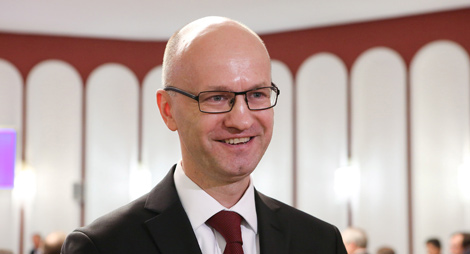Opinions & Interviews
Positive dynamics in Belarus’ export to USA noted

MINSK, 29 March (BelTA) – Steadily positive dynamics in Belarus’ merchandise export to the USA has been registered for the last few years, BelTA learned from Charge d’affaires of Belarus to the USA Pavel Shidlovsky.
According to the diplomat, the trend was particularly expressive when Belarus’ export rose by 70% in 2017 to reach $225 million. “However, the figures are insignificant if we consider the capacity of the American market. The USA’s share is less than 1% of Belarus’ total merchandise export,” said Pavel Shidlovsky. “The domestic demand in the United States is so strong that domestic production cannot fully satisfy the market demand despite the power of the American economy and attempts of the White House administration to implement a protectionist policy along the lines of ‘Buy American products’. Marketing services of Belarusian companies have their work cut out for them.”
Belarus’ staple exports to the USA include potash fertilizers, metal products, x-raying equipment, devices based on liquid crystals, furniture, nitrogen fertilizers, flax fabrics, glass fiber, woodworking products, confectionery, and tinned fish. The share of consumer goods, which are put on shop shelves, is small. This segment of the Belarusian export has been on the rise for the last few years.
“If we talk about prospects of Belarusian merchandise export, we should mention restrictions on some commodity groups. In particular, as a country Belarus is not certified to export meat products to the USA. Belarusian dairy exports to the USA are subject to quotas, this is why exporters have to find American importers with available quotas. There are no legal restrictions on exporting other Belarus-made consumer goods to the USA,” said Pavel Shidlovsky. “Only the first steps are being made now to promote Belarusian products into the largest American retail chains. Meanwhile, Belarusian sweets, chocolate, cookies, tinned fish, and honey are widely represented in many shops run by small retail chains in various states of the country. The shipments are comparatively small for now but they already generate revenues as large as millions of U.S. dollars per annum and the growth dynamics is good. I would like to mention the growing export of furniture made by a company residing in the free economic zone Mogilev. Its products are sold in shops of a furniture retail chain, which is recognized in the USA and the rest of the world.”
The diplomat also mentioned that the American market has a considerable capacity, solvency, and steady demand for virtually any kinds of products, including imports. Yet competition is tough across the board. In his opinion, Belarusian companies should anticipate massive initial investments in penetrating the U.S. market, including the cost of enabling feedback from end consumers. Belarusian companies will have to put efforts into proper advertising, getting their products certified, into marketing research, and establishing contacts with partners in the USA.
Pavel Shidlovsky reminded about the importance of the first Belarusian-American forum for small and medium business, which was organized in 2017.
The diplomat also drew attention to the fact that in 2017 Belarus secured the highest ever export of services to the USA — $570 million (30% up), with the surplus at $488 million. He also pointed out that IT services represent about 95% of Belarus’ total export of services to the USA. In 2017 the export of computer services to the USA exceeded $0.5 billion, 26% up.
“The result owes a lot to efforts of resident companies of the Hi-Tech Park. Outsourcing still plays a major role in export, however, specialists believe that at present there are good prerequisites in the Hi-Tech Park for the Belarusian IT industry to make the transition from the outsourcing-based business model to a product-based one. Plans of IT companies are closely connected with the Digital Economy Development Ordinance signed by the Belarus president. The document incorporates many proposals of the IT community. The first positive results of the document’s enforcement will be registered soon,” said the diplomat.
Speaking about the export of other kinds of services, Pavel Shidlovsky noted that the export of tourism services went up by 60% in 2017 while the export of transport services doubled. The embassy hopes that the positive trends will last, particularly taking into account the liberalization of Belarusian visa regulations.
Pavel Shidlovsky also spoke about the development of tourism ties. A Belarusian pavilion was arranged as part of the New York Times Travel Show in January 2018 for the first time ever in the history of Belarusian-American relations. The pavilion drew crowds. During the travel show an agreement was reached on arranging another fact-finding tour around Belarus in summer 2018 for representatives of the U.S. tourism industry. The first tour was arranged in June 2017.







 print version
print version make home page
make home page add to bookmarks
add to bookmarks

